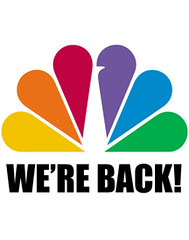
“In 2009 and 2010, all the two-newspaper markets will become one-newspaper markets, and you will start to see one-newspaper markets become no-newspaper markets,” said Mike Simonton, a senior director at Fitch Ratings, who analyzes the industry, to The New York Times.
He is not alone in his assessment. Time magazine recently listed what it believes are the 10 most endangered newspapers in America, including: The Philadelphia Daily News, The Minneapolis Star Tribune, The Miami Herald, The Detroit News, The Boston Globe, The San Francisco Chronicle, The Chicago Sun-Times, The New York Daily News, The Fort Worth Star-Telegram, and The Cleveland Plain Dealer. The article also suggests eight of the 50 largest papers could be gone in the next 18 months. (Hat tip: Thomas Mitchell, editor of the Las Vegas Review-Journal, who has been posting a series called "Information wants to be free, reporters want to be paid" for some time.)
There is a rub too. According to a Nielsen Online report for the Newspaper Association of America, average monthly unique audience figures for newspaper Web sites grew by nearly 7.3 million in 2008 to 67.3 million visitors, an increase of 12.1 percent over 2007. Monthly unique visitors during the fourth quarter of 2008 averaged 68.2 million, an 8.6 percent increase over the same period a year ago (62.8 million).
So the reality is that newspapers are more popular than ever, but the business model is broken. It doesn't have to be, but it is because daily publishers operated in denial for almost a decade. Most of them, including the Orlando Sentinel, noted steep circulation declines as early as 2003. From our data, virtually all newspaper circulation graphs look similar if not the same.
The Solution Is Symbiotic Content Over Duplication
There are many reasons newspapers are failing, but the one we'll touch on today is the most obvious. When publications migrated online, they duplicated the content in entirety and then added more features to the online asset than the print publication could ever hope to support.
While this might have proved to be a successful model, dailies made the mistake of considering the online asset an entirely new revenue stream (thereby denying print advertisers the benefit of the online circulation as well). Had the advertisers been allowed to migrate online for free, dailies might have survived with a single revenue stream.
But instead of having one product, dailies created two. And in doing so, they became their own competition, with the better product only fetching mere pennies on the dollar in terms of advertising revenue. Another solution might have been to follow other models proven successful on the Web.
Instead of duplicating content, newspapers could have considered creating a more symbiotic model, with the print and online versions of the publication carrying similar but modified content. For example, the printed daily could have included the in depth coverage (the kind that kept newspapers competitive with broadcast over the last few decades), while the online versions could have summarized, editorialized, or provided actual supporting documentation (such as letters, court filings, etc.) for the print version.
Doing so would have driven print subscribers online and some online readers to subscribe. While there are many different degrees of differentiation for such a model, the basics are the same. There are plenty of companies that have already proven premium content still pays the rent. Sometimes, it even pays more than an annual subscription to a daily newspaper.
Not All Dailies Will Die, But News May Never Be The Same
If there is a bright side to the blight facing newspapers, it might be that the long-term future seems more promising than short term. Eventually, one can hope that the public will grow weary of increasingly yellow journalism (biased opinion masquerading as objective fact) and return to objectivity as once envisioned by Walter Lippmann.
This doesn't mean that I believe people will pay for objective reporting as it exists today, but I do think objectivity will eventually recapture its audience, assuming tomorrow's dailies will resist the urge to tamper with the term as today's dailies have done. (Not everyone wants to have their opinions validated. Some people still value the truth.)
Of course, once these publications have an audience, advertisers will follow. In fact, they'll be even more likely to follow as soon as marketers finally learn that circulation isn't the best measure. It hasn't been for some time.































